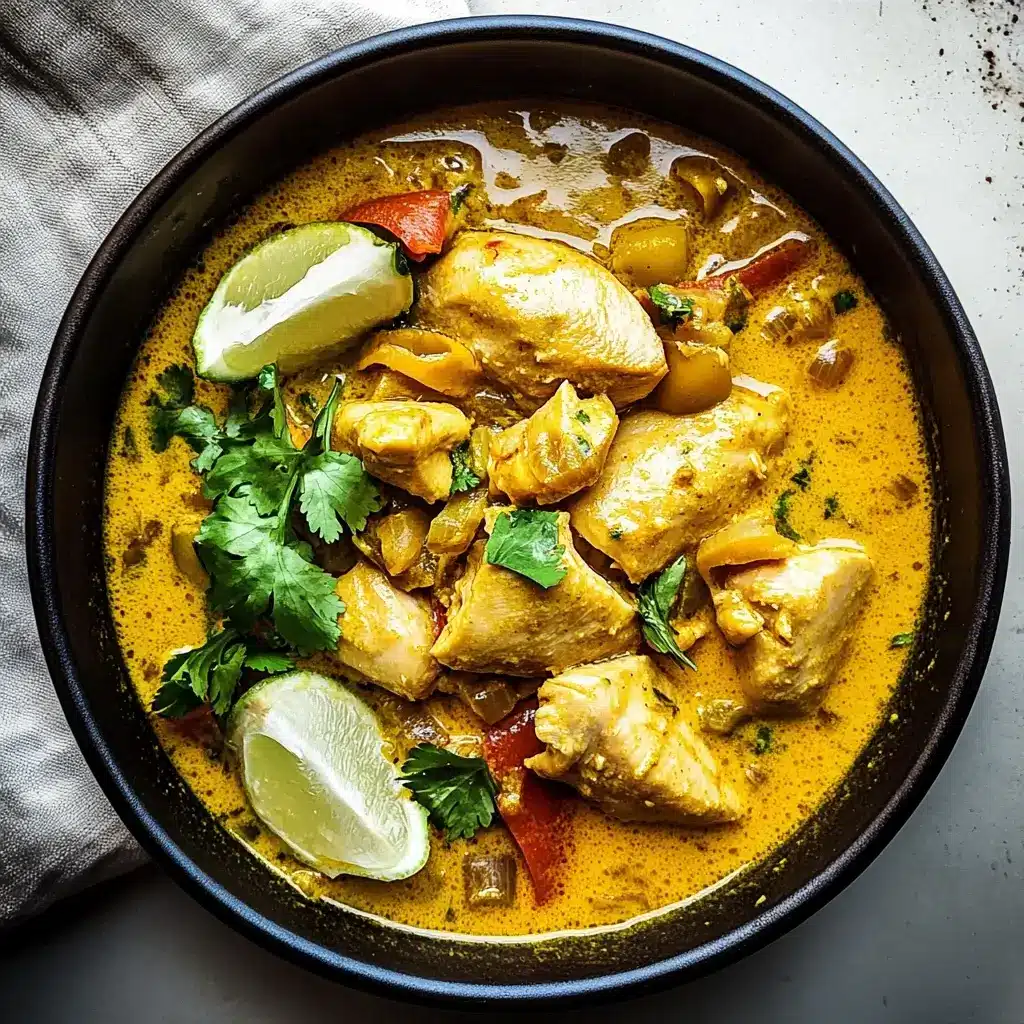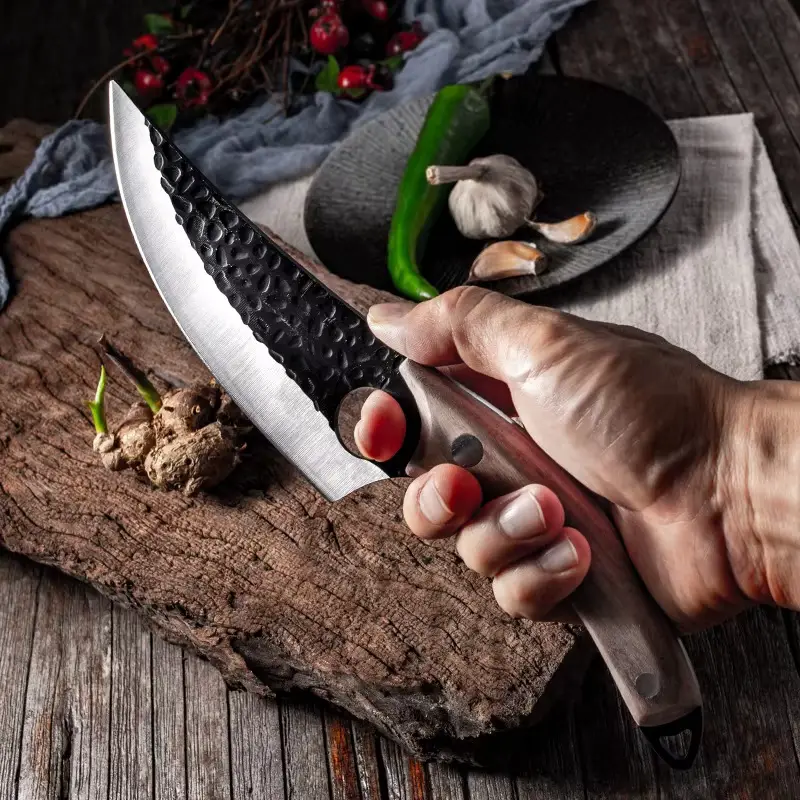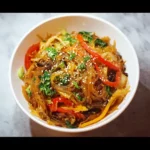The aroma alone is enough to transport me back to bustling Bangkok street food stalls, the gentle simmering of coconut milk mingling with exotic spices. For years, I chased that perfect Thai Yellow Chicken Curry – the kind that’s creamy yet light, fragrant but not overpowering, with tender chicken and perfectly cooked vegetables. After countless attempts, tweaking spice levels, and experimenting with different brands of coconut milk, I finally landed on this recipe. It has since become a cherished staple in our home. The kids, who can be notoriously picky, actually ask for “that yummy yellow chicken stuff,” and my partner, a self-proclaimed curry connoisseur, gives it two enthusiastic thumbs up every single time. It’s not just a meal; it’s an experience – a comforting, vibrant, and utterly delicious journey for the taste buds that I’m thrilled to share with you. This isn’t just another recipe; it’s a labor of love, optimized for both your kitchen and your search engine, ensuring you find your way to a truly exceptional bowl of curry.
The Enduring Appeal of Thai Yellow Chicken Curry
Thai cuisine, with its intricate balance of sweet, sour, salty, bitter, and spicy flavors, has captivated palates worldwide. Among its many jewels, Thai curries stand out for their aromatic complexity and satisfying richness. While green curry offers fiery heat and red curry a robust spice, Yellow Curry, or “Kaeng Kari Gai” (แกงกะหรี่ไก่), presents a milder, sweeter, and more fragrant profile, making it an accessible and beloved choice for both curry novices and seasoned enthusiasts.
Its distinctive golden hue comes from turmeric, a key spice in its paste, which also lends a gentle earthiness. Unlike its spicier cousins that often heavily feature fresh green or red chilies, yellow curry paste traditionally incorporates dried red chilies (often milder varieties), along with a symphony of spices like cumin, coriander, lemongrass, galangal, ginger, garlic, and shallots. The influence of Indian and Malay cuisines is evident in its composition, particularly with the inclusion of spices like curry powder, cinnamon, and sometimes even star anise, which contribute to its unique, almost perfumed aroma.
This recipe aims to demystify the process of creating an authentic-tasting Thai Yellow Chicken Curry at home. We’ll explore the nuances of ingredient selection, the importance of technique, and how to achieve that perfect harmony of flavors that makes this dish so irresistible. Prepare to transform your kitchen into a haven of Thai aromas and create a meal that will undoubtedly impress.
Mastering the Symphony of Flavors: Your Ingredient Checklist
Achieving the perfect Thai Yellow Chicken Curry hinges on quality ingredients. While some may seem exotic, most are readily available in well-stocked supermarkets or Asian grocery stores. Using fresh components where possible will significantly elevate the final dish.
Here’s what you’ll need for approximately 4-6 servings:
- For the Chicken & Marinade (Optional but Recommended):
- 1.5 lbs (approx. 680g) boneless, skinless chicken thighs, cut into 1-inch pieces
- 1 tablespoon fish sauce
- 1 teaspoon light soy sauce
- 1/2 teaspoon white pepper (optional)
- For the Curry:
- 2 tablespoons coconut oil (or vegetable oil)
- 1 large yellow onion (about 1.5 cups), cut into wedges or thick slices
- 3-4 cloves garlic, minced
- 1-inch piece of ginger, grated or finely minced
- 3-5 tablespoons Thai yellow curry paste (adjust to your spice preference and brand potency; Mae Ploy, Aroy-D, or Maesri are common brands)
- 2 cans (13.5 oz / 400ml each) full-fat coconut milk, unshaken (reserve about 1/4 cup of the thick cream from the top of one can)
- 1 cup chicken broth (low sodium preferred)
- 2 medium potatoes (e.g., Yukon Gold or Russet, about 1.5 cups), peeled and diced into 1-inch cubes
- 2 medium carrots (about 1 cup), peeled and sliced into 1/4-inch thick rounds or diagonal cuts
- 1 red bell pepper, deseeded and cut into 1-inch pieces (optional, for color and sweetness)
- 1-2 tablespoons fish sauce (Nam Pla), to taste
- 1-2 tablespoons palm sugar (or brown sugar/granulated sugar), to taste
- 1 tablespoon fresh lime juice (from about 1/2 lime), or to taste
- 1/2 cup frozen peas (optional, added at the end)
- For Garnish (Optional but Highly Recommended):
- Fresh cilantro leaves, roughly chopped
- Fresh Thai basil leaves (if available, otherwise regular basil)
- Thinly sliced red chili (e.g., Fresno or Thai bird’s eye, for extra heat)
- Lime wedges, for serving
- For Serving:
- Steamed Jasmine rice
A Note on Key Ingredients:
- Chicken Thighs vs. Breasts: Thighs are preferred for their flavor and tenderness; they remain moist even with longer simmering. Chicken breasts can be used but should be added later in the cooking process to prevent them from drying out.
- Yellow Curry Paste: The heart of the dish. Brands vary in spice level and flavor profile. Start with less and add more if needed. For a truly authentic experience, you could make your own, but quality store-bought pastes are excellent time-savers.
- Full-Fat Coconut Milk: Essential for creaminess and richness. Do not use “light” coconut milk, as it will result in a watery curry. The unshaken can allows you to scoop off the thick cream from the top, which is ideal for “blooming” the curry paste.
- Fish Sauce: This umami powerhouse is a cornerstone of Thai cooking. Brands like Red Boat, Three Crabs, or Tiparos are popular. It adds saltiness and depth of flavor.
- Palm Sugar: Adds a distinct, caramel-like sweetness that balances the spice. If unavailable, light brown sugar is the best substitute, followed by granulated sugar.
Step-by-Step to Curry Perfection: The Method
Follow these instructions carefully to build layers of flavor and achieve a beautifully balanced Thai Yellow Chicken Curry.
- Prepare the Chicken (Optional Marination):
- If you have time, marinate the chicken. In a medium bowl, combine the chicken pieces with 1 tablespoon of fish sauce, 1 teaspoon of light soy sauce, and (if using) 1/2 teaspoon of white pepper. Toss to coat evenly. Cover and refrigerate for at least 15-30 minutes, or up to an hour. This step helps to tenderize the chicken and infuse it with flavor. If short on time, you can skip this step.
- Sauté Aromatics and Bloom Curry Paste:
- Place a large, heavy-bottomed pot, Dutch oven, or deep skillet over medium heat. Add the coconut oil.
- Once the oil is shimmering, add the sliced yellow onion and cook, stirring occasionally, for 3-4 minutes until softened and slightly translucent.
- Add the minced garlic and grated ginger. Sauté for another minute until fragrant, being careful not to burn them.
- Push the onions, garlic, and ginger to one side of the pot. Add the reserved thick coconut cream (about 1/4 cup) to the empty space. Bring it to a gentle simmer until it starts to separate and you see oil bubbles (this can take 2-3 minutes).
- Add the yellow curry paste to the simmering coconut cream. Stir and “fry” the paste in the cream for 2-3 minutes, mashing it against the pot with your spoon. This step, known as “blooming,” is crucial for releasing the paste’s aromatic compounds and deepening its flavor. It should become very fragrant.
- Cook the Chicken:
- Add the chicken pieces (marinated or plain) to the pot. Stir to coat the chicken thoroughly with the curry paste mixture. Cook, stirring occasionally, for 5-7 minutes, or until the chicken is lightly browned on all sides and mostly cooked through.
- Build the Curry Sauce:
- Pour in the remaining coconut milk from both cans and the chicken broth. Stir well to combine everything, scraping up any browned bits from the bottom of the pot.
- Bring the mixture to a gentle simmer. Do not allow it to come to a rolling boil, as this can cause the coconut milk to curdle or separate undesirably.
- Add Vegetables and Simmer:
- Add the diced potatoes and sliced carrots to the simmering curry. Stir gently to submerge them.
- Cover the pot partially (leaving a small gap for steam to escape) and reduce the heat to low or medium-low. Maintain a gentle simmer.
- Cook for 15-20 minutes, or until the potatoes and carrots are tender when pierced with a fork. Stir occasionally to prevent sticking.
- Add Bell Pepper and Final Seasonings:
- If using, add the sliced red bell pepper to the curry. Stir and cook for another 3-5 minutes, just until the bell pepper is tender-crisp.
- Now, it’s time to balance the flavors. Stir in 1 tablespoon of fish sauce and 1 tablespoon of palm sugar (or your chosen sugar). Taste the curry.
- Adjust seasonings as needed:
- For more saltiness/umami: Add more fish sauce, 1 teaspoon at a time.
- For more sweetness: Add more palm sugar, 1 teaspoon at a time.
- For more spice: You can add a pinch of cayenne pepper or a little more curry paste (dissolve it in a bit of hot liquid from the pot first).
- Once the flavors are balanced to your liking, stir in the fresh lime juice. This brightens up all the flavors.
- If using frozen peas, stir them in during the last minute of cooking; they just need to heat through.
- Rest and Serve:
- Remove the pot from the heat. Let the curry rest for 5-10 minutes before serving. This allows the flavors to meld further.
- Ladle the Thai Yellow Chicken Curry generously over steamed Jasmine rice.
- Garnish with fresh cilantro, Thai basil leaves, thinly sliced red chili (if desired), and serve with extra lime wedges on the side.
Understanding the Nutritional Landscape
Servings: This recipe yields approximately 4-6 generous servings.
Calories per serving (estimate): Approximately 550-700 calories per serving, without rice. This can vary significantly based on the exact brand of coconut milk (fat content), the amount of oil used, the size of chicken pieces, and portion size.
General Nutritional Profile:
Thai Yellow Chicken Curry is rich in flavor and, due to the coconut milk, relatively high in saturated fats. However, coconut milk also contains medium-chain triglycerides (MCTs), which are metabolized differently than other saturated fats. The dish provides a good source of protein from the chicken and various vitamins and minerals from the vegetables and spices, particularly turmeric (curcumin).
- To make it slightly lighter (though it will alter the authentic taste and texture):
- You could try using one can of full-fat and one can of light coconut milk, but be prepared for a less creamy result.
- Trim all visible fat from the chicken thighs.
- Load up on more low-calorie vegetables like green beans or zucchini.
It’s important to enjoy this dish as part of a balanced diet. The inclusion of rice will add to the carbohydrate and calorie count.
Timing Your Culinary Creation: Preparation and Cooking Time
Understanding the time commitment helps in planning your meal.
- Preparation Time: Approximately 25-30 minutes. This includes:
- Chopping chicken (5-7 minutes)
- Marinating chicken (15-30 minutes, mostly inactive time)
- Peeling and chopping vegetables (10-15 minutes)
- Mincing garlic and ginger (3-5 minutes)
- Measuring out other ingredients (5 minutes)
- Cooking Time: Approximately 35-45 minutes. This includes:
- Sautéing aromatics and blooming paste (5-7 minutes)
- Cooking chicken (5-7 minutes)
- Simmering curry with potatoes and carrots (15-20 minutes)
- Adding bell pepper and final seasonings (5-7 minutes)
- Resting time (5-10 minutes, inactive)
- Total Time: Approximately 1 hour to 1 hour 15 minutes (excluding longer marination if chosen).
This timeframe makes it a feasible weeknight meal if you’re organized, or a relaxed weekend cooking project.
Elevating Your Meal: How to Serve Thai Yellow Chicken Curry
Serving Thai Yellow Chicken Curry is an experience in itself. The vibrant colors and enticing aroma deserve a presentation that does them justice.
- The Classic Foundation: Steamed Jasmine Rice
- Fluffy, fragrant Jasmine rice is the quintessential accompaniment. Its delicate aroma and slightly sticky texture are perfect for soaking up the rich curry sauce.
- Rinse the rice thoroughly before cooking to remove excess starch for fluffier grains.
- Cook according to package directions or in a rice cooker.
- Alternative Grains & Breads:
- Brown Jasmine Rice: A healthier, nuttier alternative.
- Quinoa: For a gluten-free, protein-rich option.
- Rice Noodles (Khanom Jeen): Thin fermented rice noodles are a traditional pairing for some Thai curries. Ladle the curry over a nest of cooked noodles.
- Roti Canai or Naan Bread: While not traditionally Thai, these flaky flatbreads are delicious for mopping up the sauce, offering a delightful fusion experience.
- Essential Garnishes (Don’t Skip These!):
- Fresh Cilantro: Adds a bright, herbaceous note. Roughly chop or use whole leaves.
- Fresh Thai Basil: Offers a unique, slightly anise-like flavor that complements the curry beautifully. If unavailable, Italian basil can be used, though the flavor profile is different.
- Sliced Red Chilies: For those who like an extra kick of heat and a pop of color. Use Fresno chilies for moderate heat or Thai bird’s eye chilies for intense spiciness (use sparingly!).
- Lime Wedges: A squeeze of fresh lime juice at the table brightens all the flavors and adds a lovely tang.
- Side Dishes to Complement:
- Simple Cucumber Salad: Thinly sliced cucumber with a light dressing of rice vinegar, a pinch of sugar, and perhaps some red onion can provide a refreshing contrast.
- Steamed Greens: Steamed bok choy, spinach, or green beans on the side add extra nutrients and a different texture.
- Pineapple Chunks: Fresh pineapple offers a sweet and tangy counterpoint that works surprisingly well with yellow curry.
- Serving Style:
- Serve the curry in individual bowls over a generous mound of rice.
- Alternatively, serve family-style with a large bowl of curry in the center of the table and individual bowls of rice, allowing everyone to customize their serving with garnishes.
Additional Pro Tips for an Unforgettable Curry
Take your Thai Yellow Chicken Curry from great to exceptional with these insider tips:
- The Magic of “Cracking” Coconut Cream: When you add the thick coconut cream to the hot pot before the curry paste, let it simmer until the oil starts to separate from the solids. This process, sometimes called “cracking” the coconut cream, helps to create a richer, more nuanced flavor and a beautiful sheen in your curry. It also allows the curry paste to bloom more effectively. Don’t rush this step.
- Don’t Be Shy with Fish Sauce and Sugar: The balance of salty (fish sauce) and sweet (palm sugar) is critical in Thai cuisine. Taste and adjust these seasonings at the end of cooking. Many people are hesitant with fish sauce due to its pungent aroma from the bottle, but it transforms during cooking, adding incredible depth (umami). Similarly, the sugar isn’t just for sweetness; it balances the other flavors.
- Layer Your Aromatics: Sautéing the onion, then garlic and ginger, and finally blooming the curry paste in stages, builds layers of flavor. Each ingredient needs its moment in the heat to release its full potential. Avoid overcrowding the pot, and don’t burn the garlic, as it can turn bitter.
- Gentle Simmer is Key: Once the coconut milk is added, maintain a gentle simmer. Boiling coconut milk vigorously can cause it to “break” or curdle, resulting in a grainy texture and an oily separation that isn’t as pleasant. Low and slow is the way to go for a smooth, cohesive sauce.
- Embrace Leftovers – They’re Even Better! Like many stews and curries, Thai Yellow Chicken Curry often tastes even better the next day. The flavors have more time to meld and deepen. Store leftovers in an airtight container in the refrigerator for up to 3-4 days. Reheat gently on the stovetop or in the microwave. You may need to add a splash of water or chicken broth if it has thickened too much.
Your Curry Conundrums Answered: FAQ
Here are answers to some frequently asked questions about making Thai Yellow Chicken Curry:
Q1: Can I make this recipe vegetarian or vegan?
A: Absolutely! To make it vegetarian/vegan:
* Protein: Substitute the chicken with firm or extra-firm tofu (cubed and pan-fried or baked until golden), chickpeas, or a medley of more substantial vegetables like broccoli florets, cauliflower, butternut squash, or green beans.
* Fish Sauce: Replace fish sauce with a vegan fish sauce alternative (available in some specialty stores), or use light soy sauce or tamari. You might need to add a pinch more salt and a tiny bit of seaweed (like a small piece of nori, removed before serving) to mimic the umami depth.
* Curry Paste: Double-check your yellow curry paste ingredients. Some brands contain shrimp paste. Look for specifically vegan-labeled pastes or make your own.
Q2: My curry isn’t as yellow/vibrant as I expected. Why?
A: The intensity of the yellow color primarily depends on the amount and quality of turmeric in your curry paste.
* Brand of Paste: Different brands use varying amounts of turmeric.
* Amount of Paste: Using less paste will result in a paler color (and less flavor/spice).
* Freshness: Older spices (and pastes) can lose their vibrancy.
* Tip: If you want a more vibrant yellow, you can add an extra 1/4 to 1/2 teaspoon of ground turmeric along with the curry paste when you’re blooming it. Be mindful that this will also slightly alter the flavor profile.
Q3: What if I can’t find palm sugar? What are the best substitutes?
A: Palm sugar has a unique, mild caramel flavor. If you can’t find it:
* Light Brown Sugar: This is the closest and most common substitute. Use a 1:1 ratio.
* Dark Brown Sugar: Can be used, but it has a stronger molasses flavor.
* Granulated White Sugar: Use slightly less, as it’s sweeter than palm sugar. You’ll miss some of the caramel notes.
* Maple Syrup or Honey: These can work in a pinch but will impart their own distinct flavors to the curry. Use sparingly and adjust to taste.
Q4: How can I adjust the spice level of the curry?
A: Thai yellow curry is generally milder than red or green curries, but spice levels can still vary.
* To Make it Milder:
* Use less curry paste. Start with the lower end of the recommended amount (e.g., 2-3 tablespoons).
* Choose a milder brand of curry paste.
* Remove seeds from any fresh chilies you might add as garnish.
* Add a bit more coconut milk or a dollop of plain yogurt/coconut cream at the end (though this will make it creamier/richer too).
* To Make it Spicier:
* Use more curry paste.
* Add a pinch of cayenne pepper or red pepper flakes along with the curry paste.
* Add a few fresh Thai bird’s eye chilies (sliced or whole) when simmering the vegetables. Be cautious, as these are very hot.
* Serve with plenty of sliced fresh chilies as a garnish for individuals to add as desired.
Q5: Can I freeze leftover Thai Yellow Chicken Curry?
A: Yes, you can freeze it, but there are a couple of things to note:
* Potatoes: Potatoes can sometimes become a bit grainy or mealy in texture after freezing and thawing in a creamy sauce. If this is a concern, you can cook the curry without potatoes and add freshly boiled or roasted potatoes when reheating. However, many people freeze it with potatoes without major issues.
* Coconut Milk: Occasionally, coconut milk-based sauces can separate slightly upon thawing. This can usually be remedied by stirring well while reheating.
* Freezing Process: Cool the curry completely before transferring it to freezer-safe airtight containers or heavy-duty freezer bags. Leave some headspace for expansion. It can be frozen for up to 2-3 months for best quality.
* Thawing & Reheating: Thaw overnight in the refrigerator. Reheat gently on the stovetop over medium-low heat, stirring occasionally, until heated through. You might need to add a splash of water, chicken broth, or coconut milk to adjust the consistency.
This Thai Yellow Chicken Curry recipe is more than just a set of instructions; it’s an invitation to explore the delightful complexities of Thai cuisine in your own kitchen. With its harmonious blend of mild spice, creamy coconut, tender chicken, and wholesome vegetables, it’s a dish that promises comfort, satisfaction, and a delicious escape. Enjoy the process, savor the aromas, and relish every spoonful!
Print
Thai Yellow Chicken Curry Recipe
Ingredients
- For the Chicken & Marinade (Optional but Recommended):
- 1.5 lbs (approx. 680g) boneless, skinless chicken thighs, cut into 1-inch pieces
- 1 tablespoon fish sauce
- 1 teaspoon light soy sauce
- 1/2 teaspoon white pepper (optional)
- For the Curry:
- 2 tablespoons coconut oil (or vegetable oil)
- 1 large yellow onion (about 1.5 cups), cut into wedges or thick slices
- 3–4 cloves garlic, minced
- 1-inch piece of ginger, grated or finely minced
- 3–5 tablespoons Thai yellow curry paste (adjust to your spice preference and brand potency; Mae Ploy, Aroy-D, or Maesri are common brands)
- 2 cans (13.5 oz / 400ml each) full-fat coconut milk, unshaken (reserve about 1/4 cup of the thick cream from the top of one can)
- 1 cup chicken broth (low sodium preferred)
- 2 medium potatoes (e.g., Yukon Gold or Russet, about 1.5 cups), peeled and diced into 1-inch cubes
- 2 medium carrots (about 1 cup), peeled and sliced into 1/4-inch thick rounds or diagonal cuts
- 1 red bell pepper, deseeded and cut into 1-inch pieces (optional, for color and sweetness)
- 1–2 tablespoons fish sauce (Nam Pla), to taste
- 1–2 tablespoons palm sugar (or brown sugar/granulated sugar), to taste
- 1 tablespoon fresh lime juice (from about 1/2 lime), or to taste
- 1/2 cup frozen peas (optional, added at the end)
- For Garnish (Optional but Highly Recommended):
- Fresh cilantro leaves, roughly chopped
- Fresh Thai basil leaves (if available, otherwise regular basil)
- Thinly sliced red chili (e.g., Fresno or Thai bird’s eye, for extra heat)
- Lime wedges, for serving
- For Serving:
- Steamed Jasmine rice
Instructions
- Prepare the Chicken (Optional Marination):
- If you have time, marinate the chicken. In a medium bowl, combine the chicken pieces with 1 tablespoon of fish sauce, 1 teaspoon of light soy sauce, and (if using) 1/2 teaspoon of white pepper. Toss to coat evenly. Cover and refrigerate for at least 15-30 minutes, or up to an hour. This step helps to tenderize the chicken and infuse it with flavor. If short on time, you can skip this step.
- Sauté Aromatics and Bloom Curry Paste:
- Place a large, heavy-bottomed pot, Dutch oven, or deep skillet over medium heat. Add the coconut oil.
- Once the oil is shimmering, add the sliced yellow onion and cook, stirring occasionally, for 3-4 minutes until softened and slightly translucent.
- Add the minced garlic and grated ginger. Sauté for another minute until fragrant, being careful not to burn them.
- Push the onions, garlic, and ginger to one side of the pot. Add the reserved thick coconut cream (about 1/4 cup) to the empty space. Bring it to a gentle simmer until it starts to separate and you see oil bubbles (this can take 2-3 minutes).
- Add the yellow curry paste to the simmering coconut cream. Stir and “fry” the paste in the cream for 2-3 minutes, mashing it against the pot with your spoon. This step, known as “blooming,” is crucial for releasing the paste’s aromatic compounds and deepening its flavor. It should become very fragrant.
- Cook the Chicken:
- Add the chicken pieces (marinated or plain) to the pot. Stir to coat the chicken thoroughly with the curry paste mixture. Cook, stirring occasionally, for 5-7 minutes, or until the chicken is lightly browned on all sides and mostly cooked through.
- Build the Curry Sauce:
- Pour in the remaining coconut milk from both cans and the chicken broth. Stir well to combine everything, scraping up any browned bits from the bottom of the pot.
- Bring the mixture to a gentle simmer. Do not allow it to come to a rolling boil, as this can cause the coconut milk to curdle or separate undesirably.
- Add Vegetables and Simmer:
- Add the diced potatoes and sliced carrots to the simmering curry. Stir gently to submerge them.
- Cover the pot partially (leaving a small gap for steam to escape) and reduce the heat to low or medium-low. Maintain a gentle simmer.
- Cook for 15-20 minutes, or until the potatoes and carrots are tender when pierced with a fork. Stir occasionally to prevent sticking.
- Add Bell Pepper and Final Seasonings:
- If using, add the sliced red bell pepper to the curry. Stir and cook for another 3-5 minutes, just until the bell pepper is tender-crisp.
- Now, it’s time to balance the flavors. Stir in 1 tablespoon of fish sauce and 1 tablespoon of palm sugar (or your chosen sugar). Taste the curry.
- Adjust seasonings as needed:
- For more saltiness/umami: Add more fish sauce, 1 teaspoon at a time.
- For more sweetness: Add more palm sugar, 1 teaspoon at a time.
- For more spice: You can add a pinch of cayenne pepper or a little more curry paste (dissolve it in a bit of hot liquid from the pot first).
- Once the flavors are balanced to your liking, stir in the fresh lime juice. This brightens up all the flavors.
- If using frozen peas, stir them in during the last minute of cooking; they just need to heat through.
- Rest and Serve:
- Remove the pot from the heat. Let the curry rest for 5-10 minutes before serving. This allows the flavors to meld further.
- Ladle the Thai Yellow Chicken Curry generously over steamed Jasmine rice.
- Garnish with fresh cilantro, Thai basil leaves, thinly sliced red chili (if desired), and serve with extra lime wedges on the side.
Nutrition
- Serving Size: One Normal Portion
- Calories: 550-700






